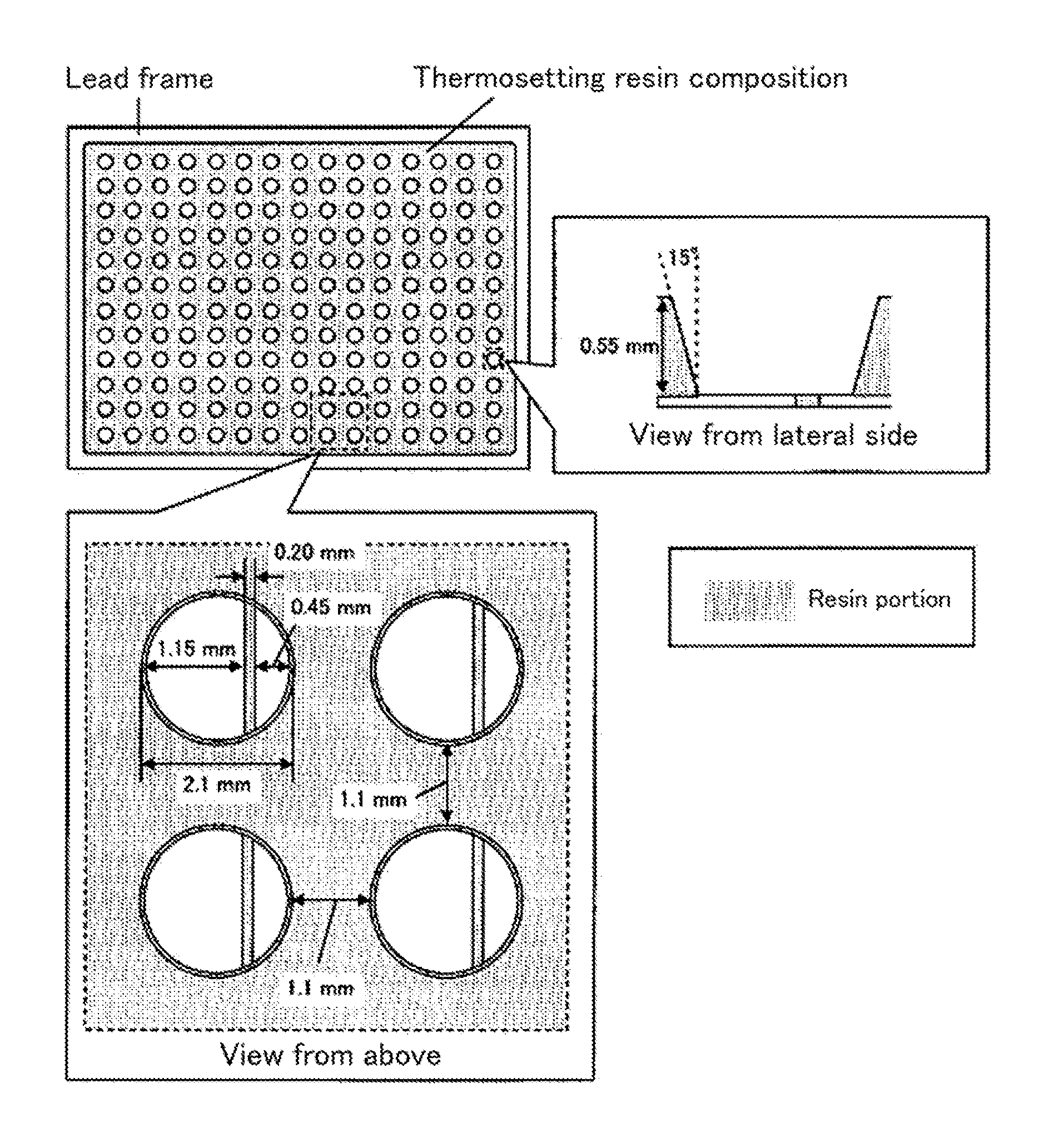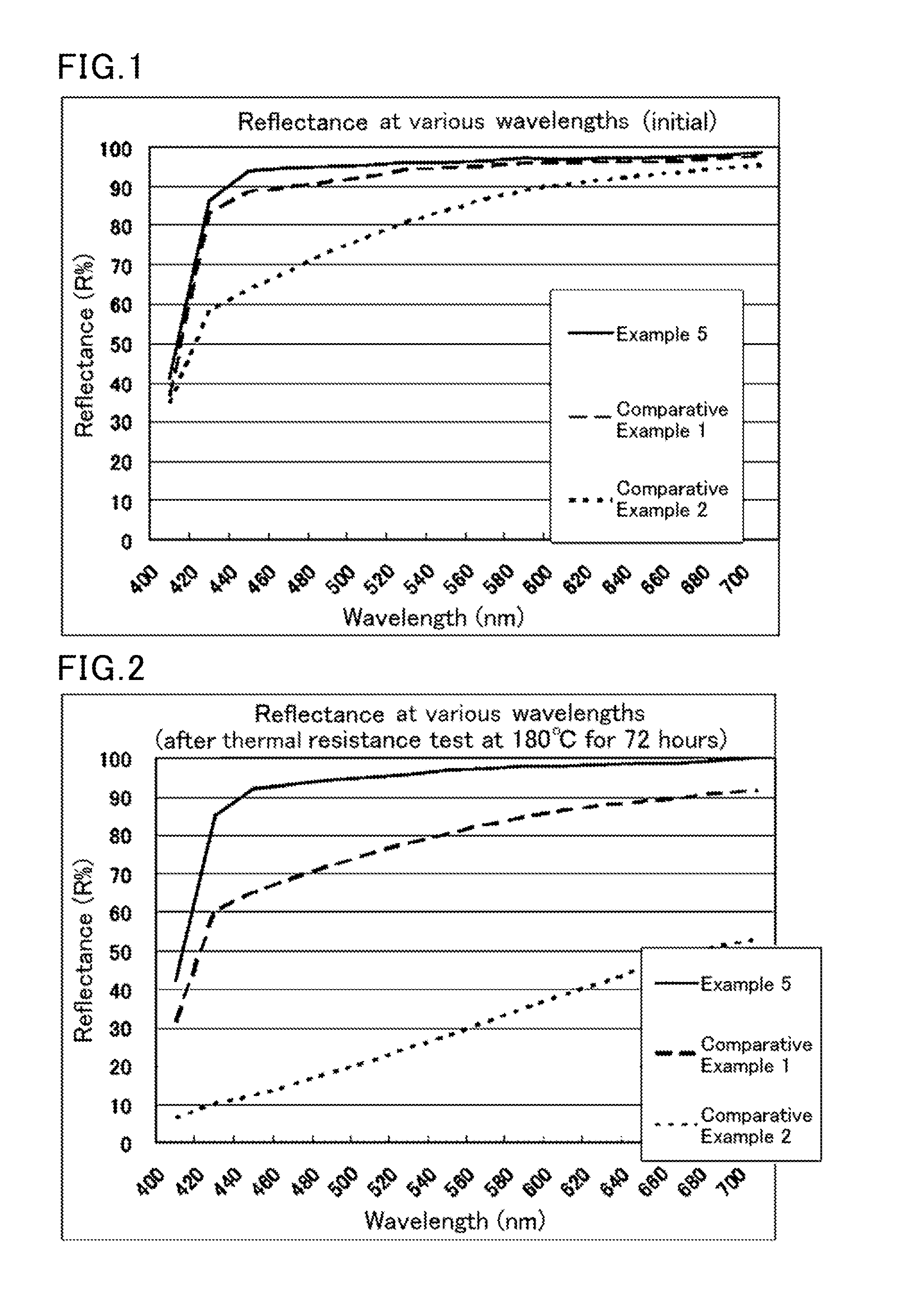Curable resin composition, curable resin composition tablet, molded body, semiconductor package, semiconductor component and light emitting diode
a technology of curable resin and composition, which is applied in the direction of semiconductor devices, semiconductor/solid-state device details, solid-state devices, etc., can solve the problems of large linear expansion coefficient of resin, inability to match the linear expansion coefficient, and damage to semiconductors, so as to reduce warpage and reduce the linear expansion coefficient. , the effect of low linear expansion coefficien
- Summary
- Abstract
- Description
- Claims
- Application Information
AI Technical Summary
Benefits of technology
Problems solved by technology
Method used
Image
Examples
examples
[0348]Examples and comparative examples of the present invention are shown below; however, the present invention is not limited thereto.
synthesis example 1
[0349]A stirrer, a drip funnel and a condenser tube were set in a four-necked 5-L flask. To this flask were added 1,800 g of toluene and 1,440 g of 1,3,5,7-tetramethylcyclotetrasiloxane, which were then heated and stirred in an oil bath at 120° C. A mixed solution of 200 g of triallyl isocyanurate, 200 g of toluene and 1.44 mL of a xylene solution (platinum content: 3% by weight) of platinum-vinylsiloxane complex was added dropwise over 50 minutes. The obtained solution was heated and stirred as it was for 6 hours, and then unreacted 1,3,5,7-tetramethylcyclotetrasiloxane and toluene were removed in vacuo. It was found by1H-NMR measurement that the product had the following structure obtained by a reaction of part of the SiH groups of 1,3,5,7-tetramethylcyclotetrasiloxane with triallyl isocyanurate.
synthesis example 2
[0350]A 2-L autoclave was charged with 720 g of toluene and 240 g of 1,3,5,7-tetramethylcyclotetrasiloxane, which, after the gas phase was replaced by nitrogen, were heated and stirred at a jacket temperature of 50° C. A mixed solution of 171 g of allyl glycidyl ether, 171 g of toluene and 0.049 g of a xylene solution (platinum content: 3% by weight) of platinum-vinylsiloxane complex was added dropwise over 90 minutes. After completion of the dropwise addition, the jacket temperature was raised to 60° C., a reaction was allowed to proceed for 40 minutes, and the reaction rate of allyl groups was verified to be at least 95% by 1H-NMR. A mixed solution of 17 g of triallyl isocyanurate and 17 g of toluene was added dropwise, then, the jacket temperature was raised to 105° C., and a mixed solution of 66 g of triallyl isocyanurate, 66 g of toluene and 0.033 g of a xylene solution (platinum content: 3% by weight) of platinum-vinylsiloxane complex was added dropwise over 30 minutes. Four h...
PUM
| Property | Measurement | Unit |
|---|---|---|
| particle size | aaaaa | aaaaa |
| temperature | aaaaa | aaaaa |
| spectral reflectance retention rate | aaaaa | aaaaa |
Abstract
Description
Claims
Application Information
 Login to View More
Login to View More - R&D
- Intellectual Property
- Life Sciences
- Materials
- Tech Scout
- Unparalleled Data Quality
- Higher Quality Content
- 60% Fewer Hallucinations
Browse by: Latest US Patents, China's latest patents, Technical Efficacy Thesaurus, Application Domain, Technology Topic, Popular Technical Reports.
© 2025 PatSnap. All rights reserved.Legal|Privacy policy|Modern Slavery Act Transparency Statement|Sitemap|About US| Contact US: help@patsnap.com



